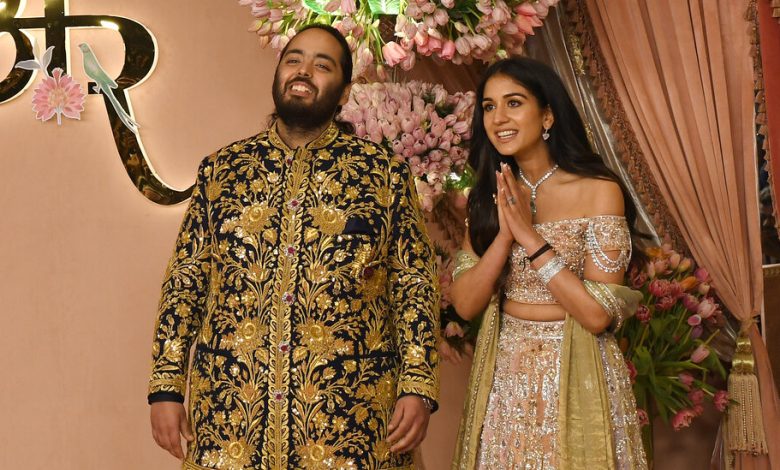A Wedding Puts India’s Gilded Age on Lavish Display

The younger son of Mukesh Ambani, India’s richest man, is set to wed his fiancée in Mumbai on Friday, the finale of a monthslong extravaganza that signaled the arrival of the unapologetic Indian billionaire on the global stage — and introduced the world to the country’s Gilded Age.
For much of the year, the festivities surrounding the nuptials of Anant Ambani and Radhika Merchant, the daughter of a fellow business tycoon, have grabbed eyeballs for their lavish displays of wealth. Millions have been spent on diamonds and emeralds the size of credit cards, on haute couture saris, on wedding invitations made of silver and gold.
Billionaire businessmen, Bollywood stars, models and politicians were among the more than 1,200 guests at a pre-wedding bash in March. Bill Gates stopped by. Rihanna performed. In May, the bride and groom-to-be threw a four-day party on a luxury cruise ship in the Mediterranean; Ms. Merchant told Vogue India they couldn’t find a land venue big enough to host all their guests.
Jay Gatsby would have been awed.
The spectacle has served as an invitation to peek inside India’s uppermost echelons, where a few individuals and families have amassed astounding fortunes in recent years. Buoyed by booming growth and a cheerleading government, the number and wealth of Indian billionaires has soared. They are overlords of the Indian economy, running the phone networks that connect millions of people, the hospitals that treat them, the supermarkets where they shop and the high-rises in which many live.
A lot of money, in the hands of the few.
In 2000, India had nine billionaires, according to Oxfam. Now, India has 200 billionaires, who collectively hold around $1 trillion in wealth, according to Forbes — nearly a quarter of the country’s 2023 gross domestic product.